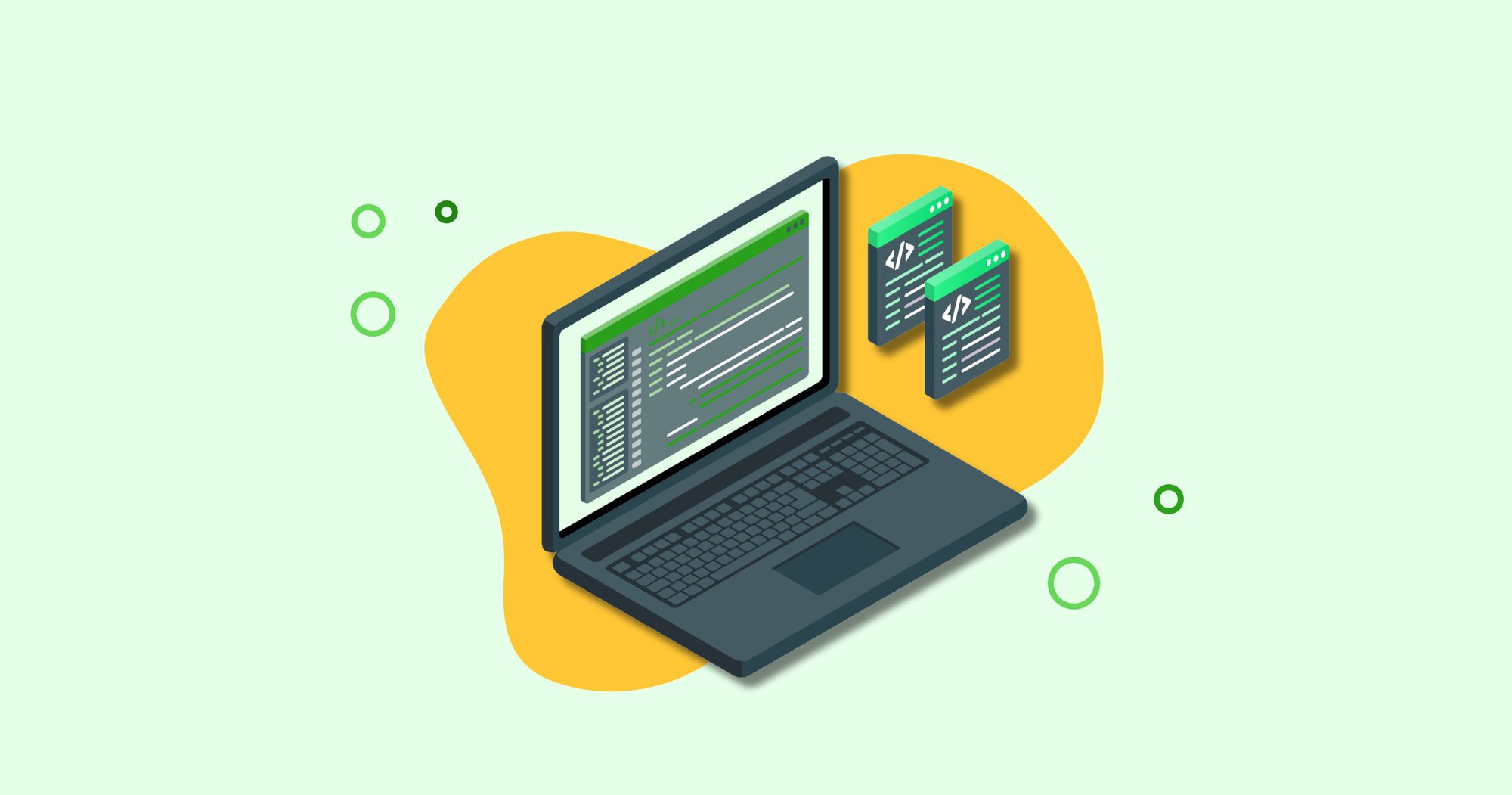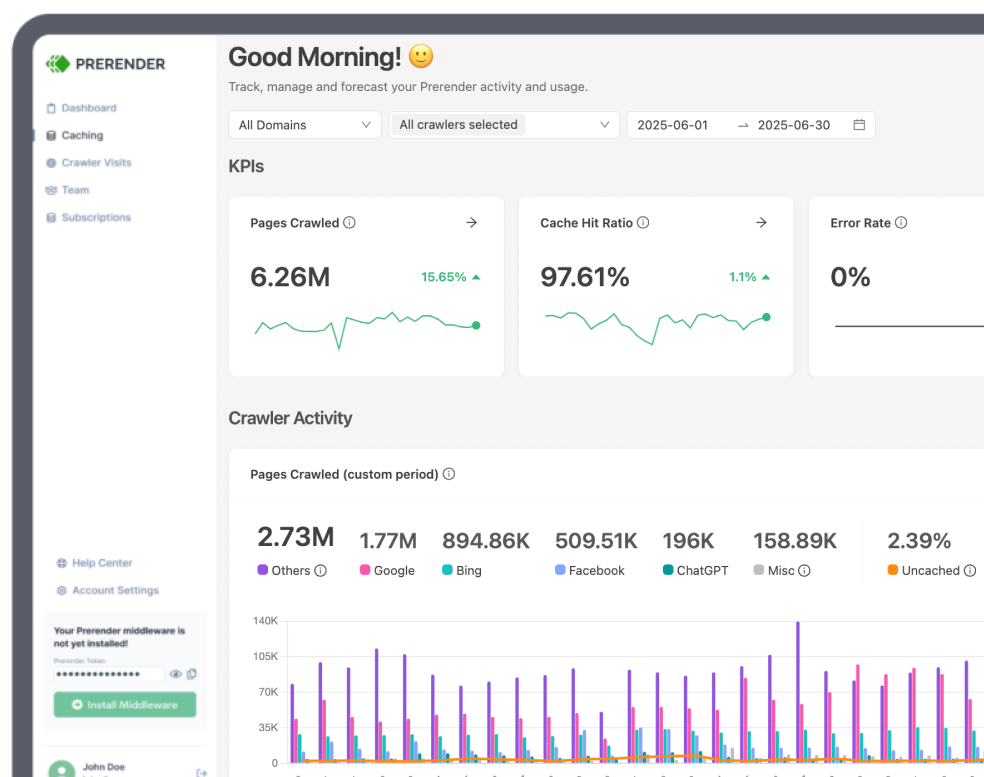In the fourth episode of Get Discovered, a podcast by Prerender.io, host Joe Walsh talks with Jonathan Bentz (AKA “Bentz”) from Direct Online Marketing (DOM). In this episode, the two discuss how anyone can approach AI adoption strategically—identifying where AI adds real value, where it still struggles, and how teams can integrate it into daily workflows without losing the human edge.
Whether you’re just starting out with AI or you’re an AI expert, this episode shares thoughtful, practical tips on how to adopt any AI tool. Watch the full episode below or read on for our full summary.
Understanding AI and Its Role in Modern Work
AI isn’t a future concept anymore: it’s already (deeply) woven into the systems and tools you use daily. The real question isn’t whether to use AI but how to evolve with it.
And sometimes, that means going back to basics, such as understanding what AI really is. When we think of how we may define AI, we can arrive at a few key examples in our day-to-day lives, says Jonathan. He defines AI, at its core, as any nonhuman system capable of making decisions. This goes well beyond ChatGPT, such as:
- Voice assistants like Siri or Alexa
- Car systems that adapt for safety and navigation
- Factory robots managing repetitive tasks
- Large language models that generate natural responses
All these tools process data and act independently, enhancing human efficiency rather than replacing it. But it’s important to ensure we’re using AI tools when they have the most impact.
Where AI Delivers Value (and Where It Doesn’t)
Jonathan and Joe talk about where AI truly delivers value. For Jonathan, AI excels at handling structured, repetitive, or templated tasks that eat up time but don’t require deep expertise. This could include:
- Brainstorming ideas or refining concepts
- Drafting SOPs, documentation, and templates
- Turning sketches into usable visuals
- Writing or editing clear, professional emails
Further reading: How to Get Indexed on AI Platforms
But he certainly doesn’t rely on AI for everything. He limits his AI usage to a few other areas:
- Complex technical or domain-specific work
- Context-heavy tasks like transforming long documents into web pages
- Unique, judgment-based situations that require human oversight
Jonathan’s tip? Think of AI as the system that covers the first 80 percent, so you can focus on the remaining 20 percent (the creative and strategic parts that still demand a human touch).
How to Adopt AI Tools Thoughtfully
Integrating AI doesn’t have to be overwhelming. Success comes from experimentation, structure, and validation. Here are some practical adoption tips that Jonathan recommends.
10 Practical AI Adoption Tips
- Experiment with multiple tools and compare results.
- Start small with controlled, low-risk prompts.
- Assign roles in chat threads for better context retention.
- Use AI for 80 percent of the work, then refine it manually.
- Cross-check results across tools for accuracy.
- Stay privacy-conscious when entering proprietary data.
- Automate repetitive workflows using built-in actions.
- Track where your human input adds value.
- Train your team to integrate AI into documentation and onboarding.
- Keep communication human, even when using automation.
These tips will help anyone who’s just getting started with AI to experiment, become more efficient, and create better work.
Jonathan also shares tips for prompting, too. Here are his suggestions for LLM prompting:
- Define a clear role or task for each session (“You are my content editor”).
- Keep long-term conversations open so the model learns context.
- Iterate prompts instead of starting from scratch.
From there, you’ll get higher-quality outputs with less time spent on reviews, edits, and revisions.
How to Navigate AI Risks and Hype
However, as AI adoption grows, it’s important to separate genuine innovation from marketing noise. Jonathan and Joe have a few key recommendations for how you can use LLMs thoughtfully—and when you should steer clear of relying on it.
- Stay cautious—especially with YMYL topics. In sensitive areas like health, finance, or legal advice (Your Money, Your Life), always verify outputs manually. Treat AI as an assistant, not a final authority.
- Watch for “AI lipstick.” Many tools labelled “AI-powered” are simply repackaged automations. Evaluate critically. Ask whether a tool truly learns and adapts or just executes preset workflows.
- Understand commercial incentives. AI tools are capital-intensive to build, and monetization can shape results. Stay aware of how advertising or commercial bias might influence generated recommendations.
How to Build the Right Mindset for the AI Era
At the end of the day, AI is (definitely) here to stay. And adopting it successfully is about skills, habits, and adaptability. Here are some tips and mindset shifts that Jonathan recommends for any SEO or marketer on how to start integrating AI in your workflow.
- Experimentation: Learn by testing and iterating.
- Critical thinking: Validate important information before acting.
- Adaptability: Update workflows as AI capabilities evolve.
- Strategic focus: Prioritize human judgment and creativity.
- Continuous learning: Adjust and refine as new tools emerge.
A Quick-Start AI Checklist
Ready to kick off your optimal AI usage? Here’s a quick-start checklist:
- Test 2–5 AI tools with the same prompt and compare outputs.
- Create ongoing chat threads with defined roles.
- Identify one repetitive task to automate this week.
- Track edits to capture your team’s added value.
- Define human review points for high-stakes topics.
Key Takeaways: Start Small, Test Often and Stay Curious
AI won’t replace thoughtful professionals, says Jonathan. His prediction? It will simply amplify efficiency and change what “high-value work” really means. The competitive advantage belongs to those who adapt quickly, validate consistently, and use AI as a force multiplier.
Key takeaways from Jonathan’s episode on how to adopt AI tools so that we evolve—not get left behind. Start small. Test often. Stay curious. The more you learn to integrate AI intentionally, the more it enhances, rather than replaces, your expertise.
About This Episode
This article is based on a conversation from Get Discovered, a podcast by Prerender.io on AI, SEO, and online discoverability. Listen to the episode on Spotify, Apple Podcasts, or YouTube. If you’d like to be a guest on future seasons of the podcast, reach out.



